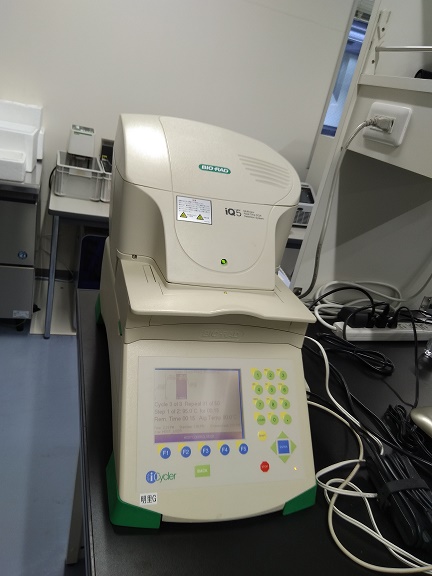Genetically modified organisms(GMOs) are living organisms including plants and microorganisms whose genetic material has been artificially manipulated through genetic engineering or recombinant DNA technology in a laboratory. The term GMO also encompasses any living organism that possesses a novel combination of genetic materials obtained from various sources through the use of modern biotechnology. The genetic modification of living organisms to obtain a desired phenotype usually involves the mutation, insertion, or deletion of certain genes in the target organism.
When a gene from one organism is purposely moved to improve or change another organism in a laboratory under controlled environmental conditions, the resulting organism is known as a genetically modified organism (GMO); and GMOs have genetic makeup different from their parent organisms. Genetically modified organisms exemplify one of the many ways of genetically manipulating the genetic makeup of organisms in order to get a desired phenotype. GMOs are organism’s whose genetic material has been altered using genetic engineering techniques such as molecular cloning and mutagenesis. When genes are transferred from one organism to another, the resulting organism is known as a transgenic organism.
Thus the phrase GMO can sometimes be synonymously used with transgenic organism since both organisms emanate from the genetic manipulation of their parent cells. Nevertheless, GMOs should not be confused with transgenic organisms since the former (i.e. GMO) has to do with organisms whose genetic makeup has been altered without the addition of genetic material from an unrelated organism while the latter (i.e. transgenic organisms) mainly deals with organisms whose genetic makeup has been altered by the addition of genetic material from another, unrelated organism.
A transgenic organism is therefore an organism whose genetic makeup has been altered by the addition of genetic material from another, unrelated organism. Most transgenic animals or plants are used in biomedical research as experimental models to perform research. Nowadays, we have genetically modified foods or (GM foods) that are genetically engineered foods or food products produced from organisms whose genetic materials have undergone genetic manipulation in the laboratory.
Genetically modified organisms (GMOs) have applications in medicine, food industry, pharmaceutical industry, environmental management, agriculture and in medical research and biotechnological research. GMOs were developed to benefit mankind in the aforementioned areas including but not limited to medicine, agriculture, the environment and the industry. The advent of recombinant DNA technology and other modern biotechnological advances have allowed molecular biologists to better understand the physiology and metabolic potentials of microbes, and this has given us the opportunity to harness the several beneficial potentials of these organisms to better our lives. GMOs are applied in medicine, agriculture, pharmaceutical industry, food industry and in the environment.
References
Bains W (1998). Biotechnology: From A to Z. 2nd ed. Oxford University Press, New York, USA.
Bourgaize D, Jewell T.R and Buiser R.G (1999). Biotechnology: Demystifying the Concepts. Pearson Education, San Francisco, CA.
Brian Robert Shmaefsky (2006). Biotechnology 101. Greenwood Publishing Group, Inc, USA. Pp. 1-273.
Bushell M.E (1998). Application of the principles of industrial microbiology to biotechnology (ed. Wiseman, A.) Chapman and Hall, New York. Pp. 5–43.
Byong H. Lee (2015). Fundamentals of Food Biotechnology. Second edition. Wiley-Blackwell, New Jersey, United States.
Chrispeels M.J and Sadava D.E (2002). Plants, Genes, and Crop Biotechnology. 2nd edition. Jones and Bartlett Publishers, Sudbury, MA.
Clark D.P and Pazdernik N (2010). Biotechnology. First edition. Elsevier Science and Technology Books, Amsterdam, Netherlands.
Das H.K (2010). Textbook of Biotechnology. Fourth edition. Wiley edition. Wiley India Pvt, Ltd, New Delhi, India.
Dictionary of Microbiology and Molecular Biology, 3rd Edition. Paul Singleton and Diana Sainsbury. 2006, John Wiley & Sons Ltd. Canada.
Glick B.R and Pasternak J.J (2003). Molecular Biotechnology: Principles and Applications of Recombinant DNA. ASM Press, Washington DC, USA.
Godbey W.T (2014). An Introduction to Biotechnology. First edition. Woodhead Publishing, Cambridge, United Kingdom.
Jee C and Shagufta (2007). Environmental Biotechnology. APH Publishing Corporation, Darya Ganj, New Delhi, India.
Lee S.Y, Lee D.Y and Kim T.Y (2005). Systems biotechnology for strain improvement. TRENDS in Biotechnology, 23(7):349-356.
Discover more from Microbiology Class
Subscribe to get the latest posts sent to your email.





